G Major is usually one of the first chords we learn as guitarists. But like all chords on the guitar, there are multiple ways to play it. Just know that as long as you play the notes G B D, you’ve got the G Major chord nailed. In this article are chord charts with detailed explanations on how to play the chords, along with various methods, techniques, and theory that will guide you along the way. Read on to master the major g chord.
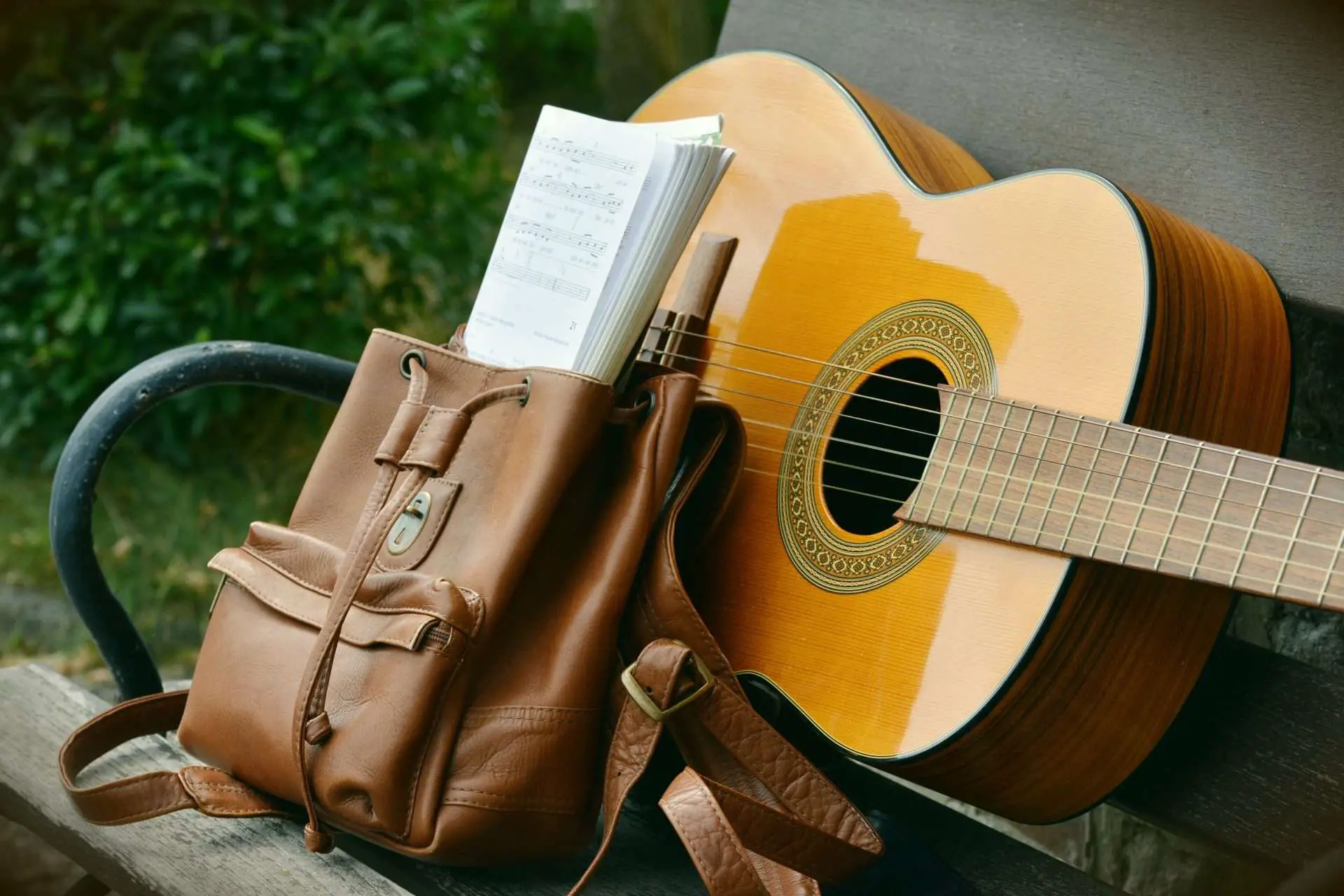
G Major Chord Theory
Before playing it is important that we understand the G Major chord and how it works.
- G Major has 3 notes: G B D
- G major is a major triad.
- A major triad is built from the root, third, and fifth of the major scale. In this case, the G major scale.
- You can also think of the intervals root, major third, perfect fifth above G.
- G maj might be notated in the following ways: G Maj, G△, or simply G
How To Play G Major
This method is the most popular and it is an open chord. It is played low on the neck and has a very full sound because of all the notes played in the chord.
Method 1:
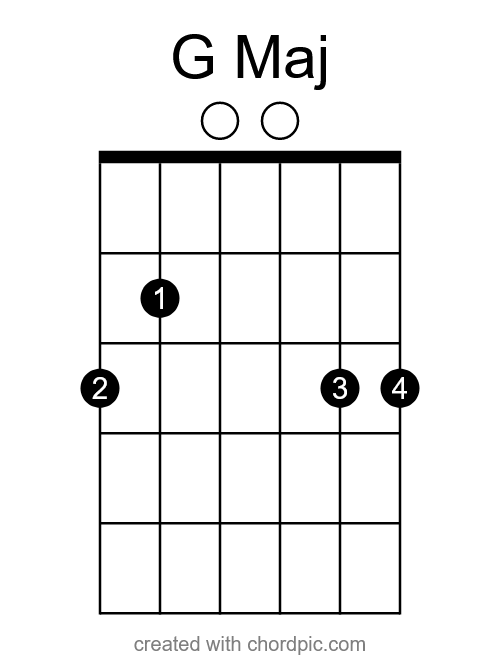
- Place your index finger on the 2nd fret of the 5th string. (B)
- Place your middle finger on the 3rd fret of the 6th string. (G)
- Place your ring finger on the 3rd fret of the 2nd string. (D)
- Place your pinky on the 3rd fret of the 1st string. (G)
G Major Barre Chord
In addition to the open chord, you can also play a G Major barre chord.
Method 2:
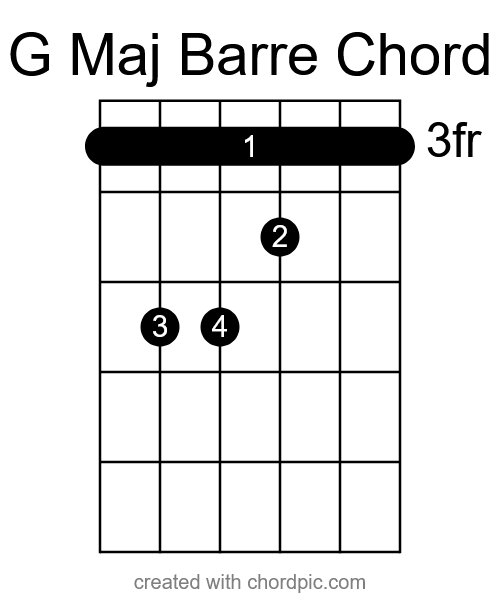
- Place your Index finger on the 3rd fret of the 6th string and barre. (G and D)
- Place your middle finger on the 4th fret of the 3rd string. (B)
- Place your ring finger on the 5th fret of the 5th string. (D)
- Place your pinky on the 5th fret of the 4th string. (G)
- Strum all the notes one by one. With barre chords it can be a challenge to make sure all of the notes are properly executed. Fix your grip and hand posture where necessary.
Alternate ways to play
If open chords aren’t your style or you are looking to spice things up, try any of these alternate ways to play G Major.
Method 3:
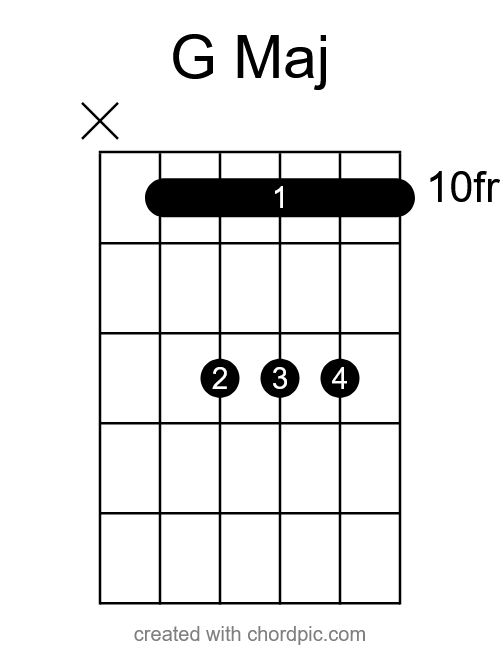
- Place your Index finger on the 10th fret of the 5th string and barre. (G)
- Place your middle finger on the 12th fret of the 4th string. (D)
- Place your ring finger on the 12th fret of the 3rd string. (G)
- Place your pinky of the 12th fret of the 2nd string. (B)
Method 4:

- Place your index finger on the 12th fret of the 4th string and barre. (D G B)
- You can also use your middle, ring, and pinky fingers for this!
Method 5:
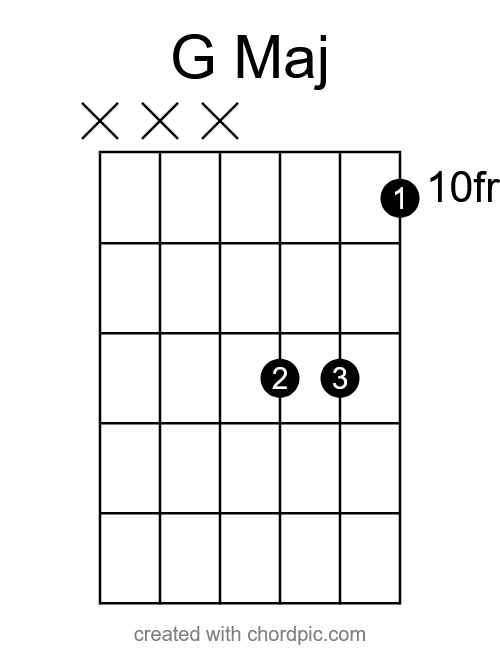
- Place your index finger on the 10th fret of the 1st string. (D)
- Place your middle finger on the 12th fret of the 3rd string. (B)
- Place your ring finger on the 12th fret of the 2nd string. (G)
G Major Chord Inversions
If you haven’t learned your triads, now is a good time to start. Below we show you how to play G Major triad in all of its inversions. Try them for yourself. Also, be sure to remember that the root of the chord and the bass note are not the same thing. G is the root note, but the bass note is the lowest note played in the chord. In 1st inversion, for example, G is still the root, but B is the bass note.
Root Position
G B D – Root of the chord in the bass.
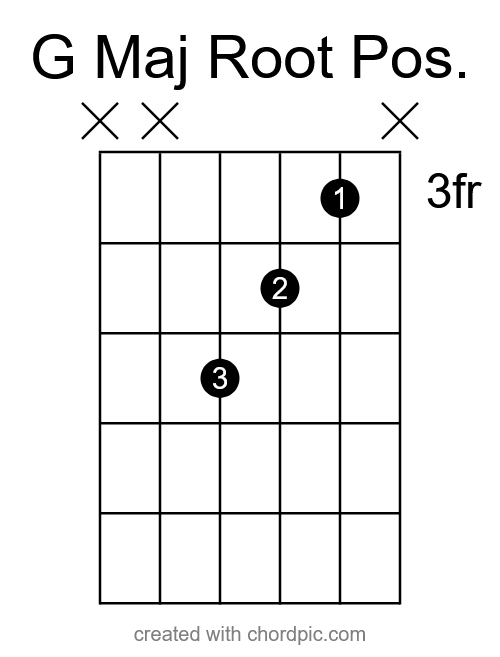
- Place your index finger on the 3rd fret of the 2nd string. (D)
- Place your middle finger on the 4th fret of the 3rd string. (B)
- Place your ring finger on the 5th fret of the 4th string. (G)
First Inversion
B D G – Third of the chord in the bass.
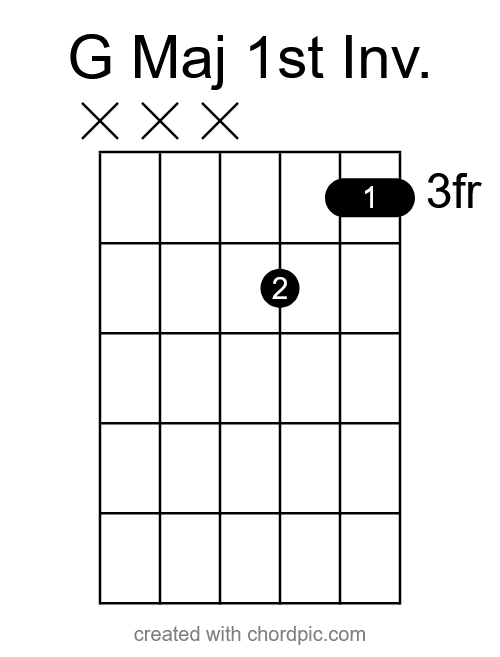
- Place your index finger on the 3rd fret of the 2nd string and barre. (D and G)
- Place your middle finger on the 4th fret of the 3rd string. (B)
Second Inversion
D G B – Fifth of the chord in the bass.
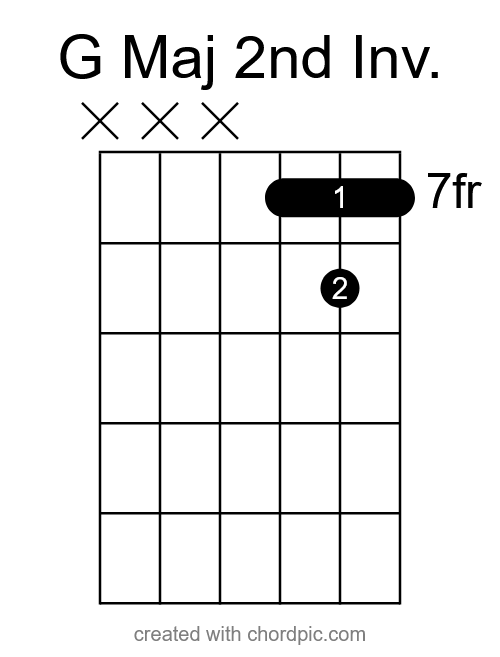
- Place your index finger on the 7th fret of the 3rd string. (D and B)
- Place your middle finger on the 8th fret of the 2nd string. (G)
Frequently Asked Questions
Which Keys Have a G Major Chord in Them?
The formula for diatonic chords in a major keys is:
I ii iii IV V vi viio
Therefore these major keys have G Major in them:
G Major:G Maj, A min, B min, C Maj, D Maj, E Min, F#dim
D Major: D Maj, E min, F# Min, G Maj, A Maj, B min, C# dim
C Major: C Maj, D min, E min, F Maj, G Maj, A min, B dim
The formula for diatonic chords in a minor keys is:
i iio III iv V VI viio
Therefore these minor keys have G Major in them:
E Min: E min, F# dim, G Maj, A min, B Maj, C Maj, D dim
C Min: C min, D dim, Eb Maj, F min, G Maj, A Maj, B Dim
B Min: B min, C#dim, D Maj, E min, F Maj, G Maj, A dim
What Is The Key Signature Of G Major?
They key signature of G major is: G, A, B, C, D, E, F#
What Chords Are In The Key Of G Major?
The Chords in the key of G Major are:
G Maj, A min, B min, C Maj, D Maj, E Min, F#dim.
The Diatonic 7th chords of G major are:
G Maj7, A min7, B min 7, C maj 7, D7, E min7, F#ø7
What Chords Go With G Major?
D, Em, C, and Am. Because all of these chords are in the key of G, they sound great along with it. Try writing a song with these simple chords!
Related:
How To Play The Gsus Chord On Guitar
Conclusion
Typically the G major chord is only taught in an open position, but we went over 8 different ways to play the G Major chord! You don’t need to memorize them all, just know that there are always many ways to play a chord depending on your desired sound. The G Major chord is made from the notes G B D. It is a major triad. It can be played in any inversion, and it is still considered a G Major chord. The G major chord can be played along with Dm, Em, C, or Am. Hopefully you have learned enough to get playing your favorite songs!
Related: The CAGED System
